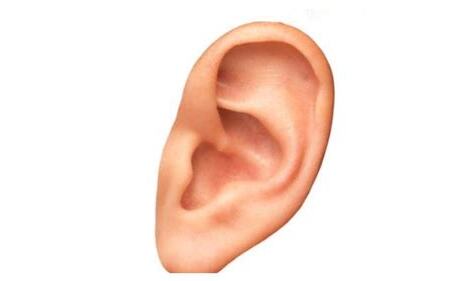「人的耳朵」是一個重要的感知聲波的器官,同時也是維持身體平衡的關鍵功能之一。耳殼作為外耳的一部分,是第一個接收聲音的部分。在哺乳類動物中,包括人類在內,我們都擁有左右對稱的一對耳朵,能夠幫助我們判斷聲源的位置。並且,人的耳朵由外耳、中耳、內耳三部分組成,各自扮演著重要的聽覺功能。」
「人的耳朵」是我們身體中極為重要的一個器官。它不僅負責接收聲音,還能讓我們感受到美妙的音樂、溝通、以及聆聽世界的各種聲音。


在日常生活中,我們常常忽略了這個小小的耳朵,卻很少意識到它的價值。人的耳朵是如此複雜且精妙的器官,它由許多細小的部件組成,彼此協同工作,以保證我們能夠正常聽到聲音。它像是一個神奇的樂器,能夠感應到聲波的震動,將其轉換為我們可以理解的信號。

透過「人的耳朵」,我們能夠聆聽到各種不同的聲音,從鳥鳴、風聲、葉子沙沙作響,到人們的談話聲、音樂作品的美妙旋律。它讓我們能夠感受到世界的多樣性,並與他人進行交流。沒有「人的耳朵」,我們將無法體驗到這麼多美好的聲音,也無法和人們進行有效的溝通。
然而,由於現代生活的快節奏和各種噪音的幹擾,我們經常忽略了對「人的耳朵」的保護和護理。過度暴露在噪音環境下,如高音量的音樂、交通噪音或是工地施工的聲音,都可能對我們的聽力造成傷害。因此,我們應該注意避免這些潛在的傷害,如佩戴耳塞或避免長時間暴露在噪音環境中。
總結來説,「人的耳朵」是我們身體中一個重要且可貴的器官,它讓我們能夠聽到美妙的聲音並進行交流。在日常生活中,我們應該保護好我們的耳朵,避免過度暴露在噪音環境中。珍惜「人的耳朵」,讓我們能夠繼續享受聲音的美好。
ears
Introduction
The ear, or more specifically the auditory system, is an organ in animals that is responsible for receiving and responding to sound waves. In mammals, it also plays a role in maintaining balance and orientation through the vestibular system, which is part of the overall equilibrium system. In the context of mammals, this system is often referred to as the vestibulocochlear organ (VBO), and it consists of three main parts: the outer ear, the middle ear, and the inner ear.
Structure of the Ear
In most mammals, the external part that protrudes from the body is referred to as the ear flap or pinna, which is the first structure to receive sound waves. In humans, this is known as the earlobe. While the term “ear” can encompass the entire peripheral auditory system, it is sometimes used exclusively for the visible outer portion. Among mammals, there is a wide variety in the external ear’s appearance, yet their operational principles are largely the same.
The outer ear includes the ear flap, or pinna, and the external ear canal, which ends at the eardrum or tympanic membrane. The external ear is the only part of the ear visible in most mammals. It serves to reflect and funnel sound waves into the ear canal. Some mammals have the ability to move their ear flaps voluntarily (like horses, sheep, and rabbits), allowing them to pinpoint sounds from specific directions, a function analogous to an animal’s ability to turn its eyes in the direction of a visual stimulus. However, humans have lost this ability to move their ear flaps significantly. The ear flap is made of a single piece of fibrous cartilage, with a relatively smooth inner surface and a more convoluted, spiral outer surface. The earlobe is not structured with cartilage but consists of subcutaneous fat and connective tissue.
Sound Transduction and Processing
Sound waves that have been reflected off the pinna enter the ear canal and travel through to the eardrum. The first third of the ear canal is composed of cartilage, while the remaining two-thirds are bony. The eardrum acts as a barrier, separating the ear canal from the middle ear cavity. When sound waves strike the eardrum, they cause it to vibrate. These vibrations are then transmitted to the middle ear via three small bones known as the ossicles: the malleus, the incus, and the stapes. The ossicles’ unique design and position within the ear amplify and focus the sound vibrations onto the inner ear.
Inner Ear and Hearing
The inner ear contains the cochlea, which is a spiral-shaped cavity filled with fluid and lined with sensory cells known as hair cells. These hair cells convert the mechanical energy of the sound vibrations into electrical impulses, which are then transmitted to the brain via the auditory nerve. The cochlea is divided into three fluid-filled chambers: the scala vestibuli, the scala media, and the scala tympani. The movement of fluid within these chambers due to sound vibrations is crucial for the transduction process.
Balance and Equilibrium
The inner ear is also responsible for maintaining balance and spatial orientation. The vestibular system, which includes the semicircular canals and the otoliths, senses head movement and linear acceleration and deceleration. This information is sent to the brain through the vestibular branch of the eighth cranial nerve, helping to maintain balance and to coordinate movement with vision.
Frequency Response and Hearing Loss
Mammals can typically hear sound frequencies between 16 and 24,000 hertz, with human speech occurring within the range of 300 to 5,000 hertz. The functioning of the auditory system relies on the interplay between the sensory organs of the ear and the central nervous system. Most cases of human hearing loss are attributed to abnormalities in the inner ear rather than defects in the central nervous system.
延伸閲讀…
人耳解剖學
擁有不同耳型的人,分別有着怎樣的命運?你的耳朵是啥樣的
Conclusion
The ear is a marvel of evolutionary engineering, enabling animals to perceive their environment through sound. The ability to hear is critical for communication, predator detection, and navigation. The structural and functional adaptations of the ear across different species reflect the diverse acoustic habitats in which animals live.
